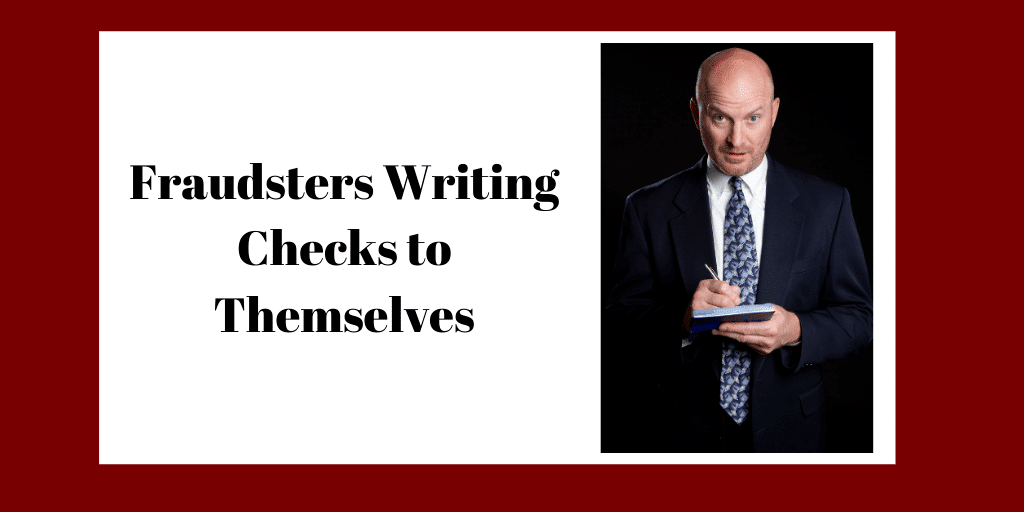Fraudsters do write company checks to themselves. Today I tell you how they do so and how you can prevent this type of theft.
Randy Toms, a city accounting clerk, creates a manual check for $5,200 that is made out to himself and signs it with a signature stamp. (The stamp is used when the mayor is out of town.) Randy enters the transaction into the accounting system–using a journal entry–as a payment to Macon Hardware. The result: The general ledger reflects a payment to Macon Hardware, but the check is made out to Randy. Also, he codes the disbursement to an account with sufficient remaining budgetary balance. The subterfuge works since the expense accounts reflects appropriate vendor activity (a check to Macon Hardware), and expenses don’t exceed budget. Randy performs the monthly bank reconciliation, so he alone sees the cleared checks.
Given Randy’s success with the first check, he continues the fraud for several years.
(Here’s another twist to this type of theft. Some companies print their checks with the signature affixed, so the computer (in effect) signs the check. When this is true, some fraudsters will print the check to a legitimate vendor. Then they will destroy the check and write a manual check (from other company check stock) to themselves. In such cases, they are either authorized signers or they forge the signature.)

The following provides the perfect environment for this theft:
As you can tell there is a lack of segregation of duties. Many small organizations are unable to segregate accounting duties since they have a limited number of employees. Even so, there are steps you can take to reduce the possibility of theft.
You may be thinking, “Wouldn’t the auditors catch this type of fraud?” Probably not. Auditors seldom compare cleared checks to supporting invoices. (If you’re an auditor, you may want to consider this potential theft in your fraud brainstorming sessions.)
The fix includes the following:
Some governments or businesses have bank statements mailed to someone outside the accounting department such as the city mayor or business owner. This person opens the bank statement and performs a cursory review of the cleared checks–once done, the bank statement is routed to the accounting department. Since cleared checks are viewed by someone else, there is less of a chance that the accounting staff will write checks to themselves.
Charles Hall is a practicing CPA and Certified Fraud Examiner. For the last thirty-five years, he has primarily audited governments, nonprofits, and small businesses. He is the author of The Little Book of Local Government Fraud Prevention, The Why and How of Auditing, Audit Risk Assessment Made Easy, and Preparation of Financial Statements & Compilation Engagements. He frequently speaks at continuing education events. Charles consults with other CPA firms, assisting them with auditing and accounting issues.
Session expired
Please log in again. The login page will open in a new tab. After logging in you can close it and return to this page.